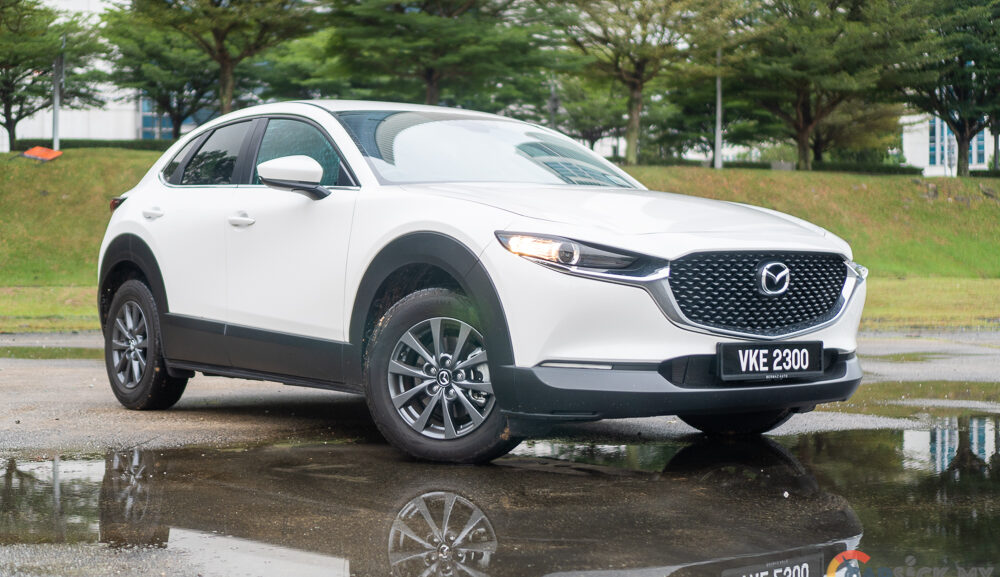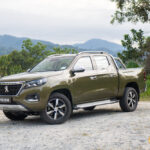While I thoroughly enjoyed reviewing the full-spec Mazda CX-30, Mazda Malaysia extended the opportunity to explore their lower-spec CX-30 variant. Typically, automakers shy away from providing the media with their entry-level models, fearing they may not adequately represent the essence of their vehicles. However, Mazda stands confidently behind its base model, the Mazda CX-30 2.0G, pricing it quite competitively. This piqued my curiosity, as I wanted to determine whether it retained the expected Mazda premium quality.

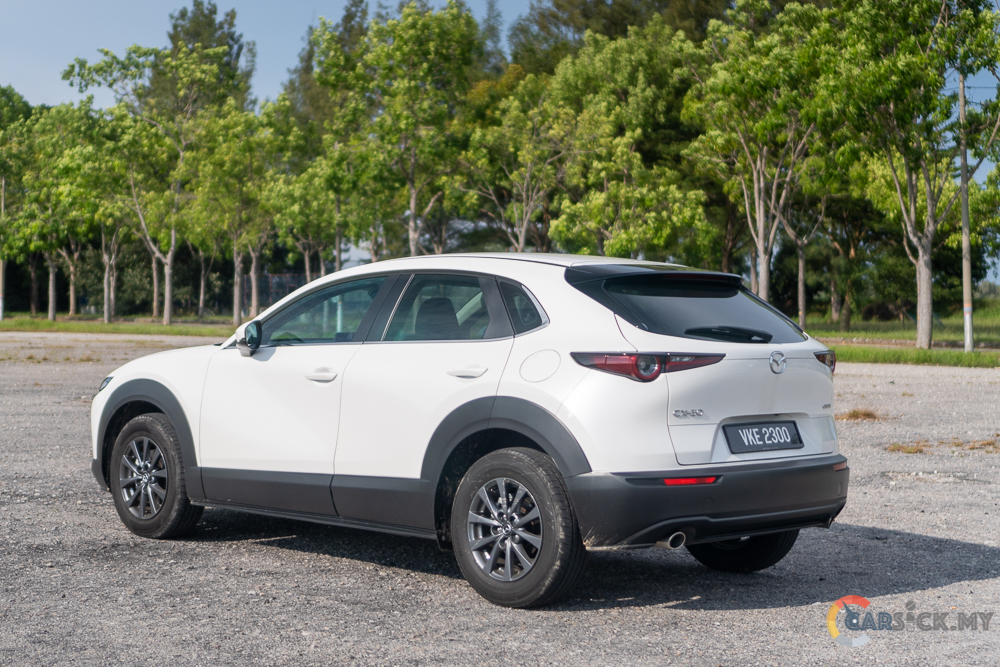 Surprisingly, the CX-30’s base model doesn’t appear “cut-price” in any way. It maintains the same sharp aesthetics as its pricier counterparts. Nonetheless, some budget-friendly substitutions have been made. While the headlights remain LED, the daytime running lights have transitioned to halogen bulbs. Fortunately, the LED headlights still exude a premium appearance, maintaining the vehicle’s overall elegance.
Surprisingly, the CX-30’s base model doesn’t appear “cut-price” in any way. It maintains the same sharp aesthetics as its pricier counterparts. Nonetheless, some budget-friendly substitutions have been made. While the headlights remain LED, the daytime running lights have transitioned to halogen bulbs. Fortunately, the LED headlights still exude a premium appearance, maintaining the vehicle’s overall elegance. 
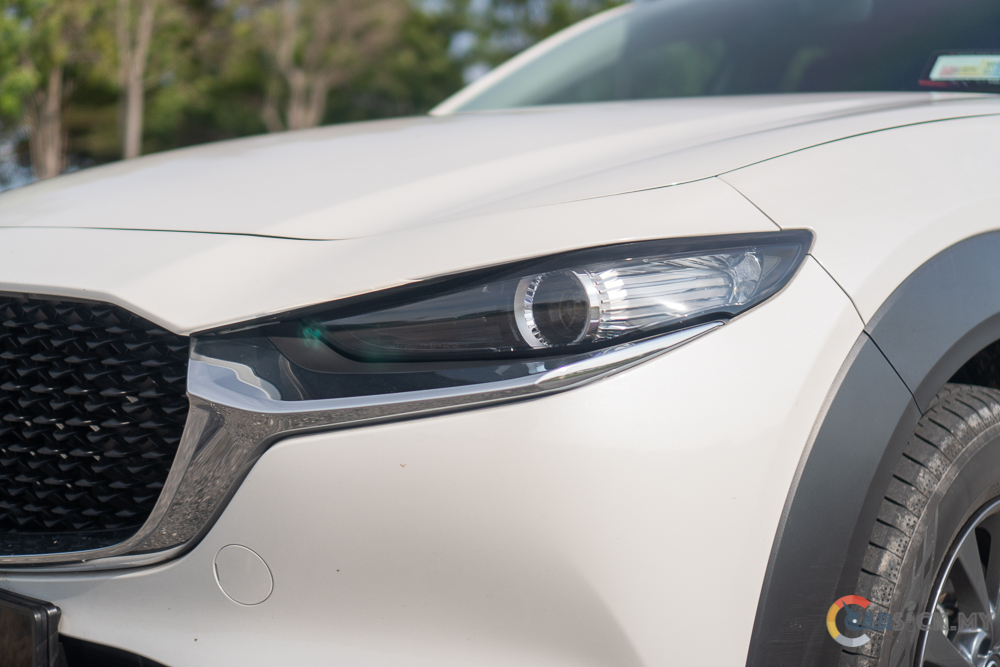
Despite the shift in headlights, the rear LED tail lights remain unchanged, preserving the vehicle’s premium aesthetic even in low-light conditions. However, parking sensors are noticeably absent in the base model, leaving drivers reliant solely on a reverse camera for assistance. If Mazda were to offer metallic paint options for this base CX-30, it could become challenging to distinguish it from the higher-spec models. 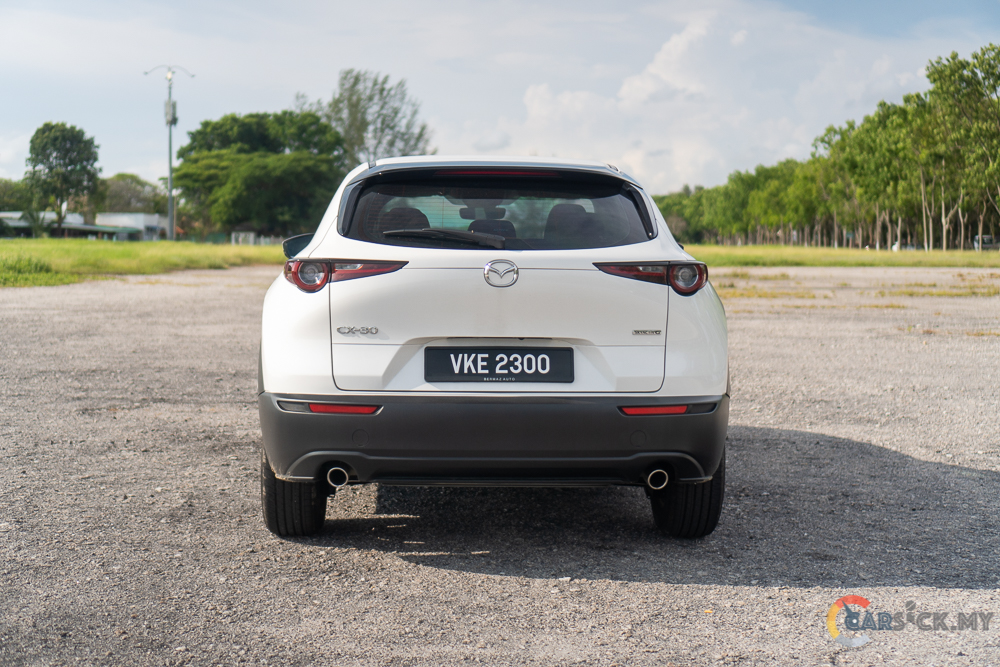
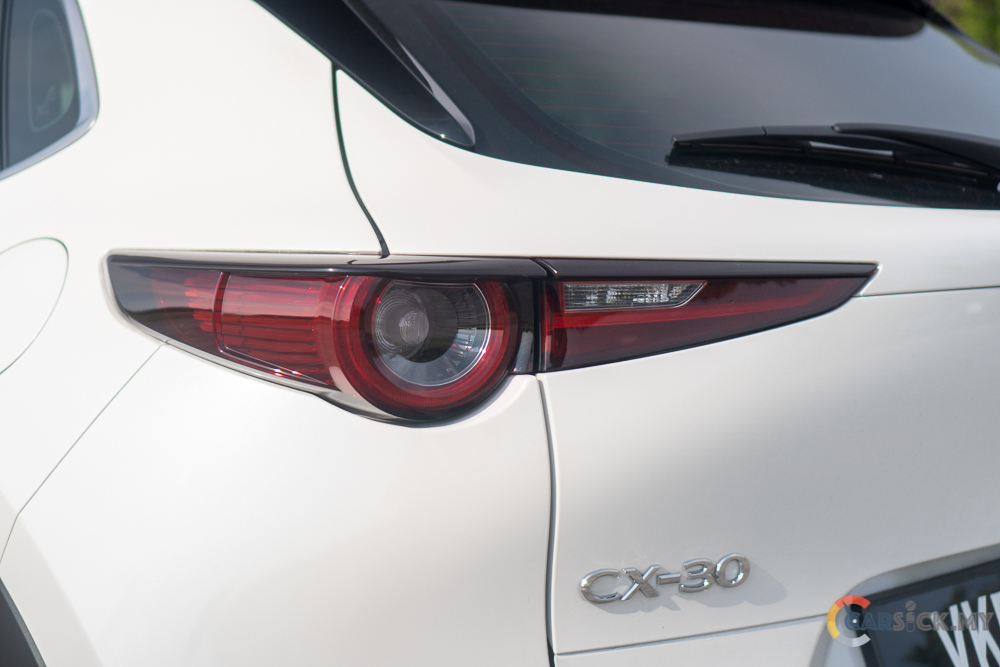
The entry-level CX-30 is equipped with a manual tailgate to keep the price competitive. Additionally, it features smaller 16-inch rims, a 2-inch reduction compared to other CX-30 variants. These rims, paired with 215/65 R16 tires, contribute to a more comfortable ride for the base model Mazda CX-30. 
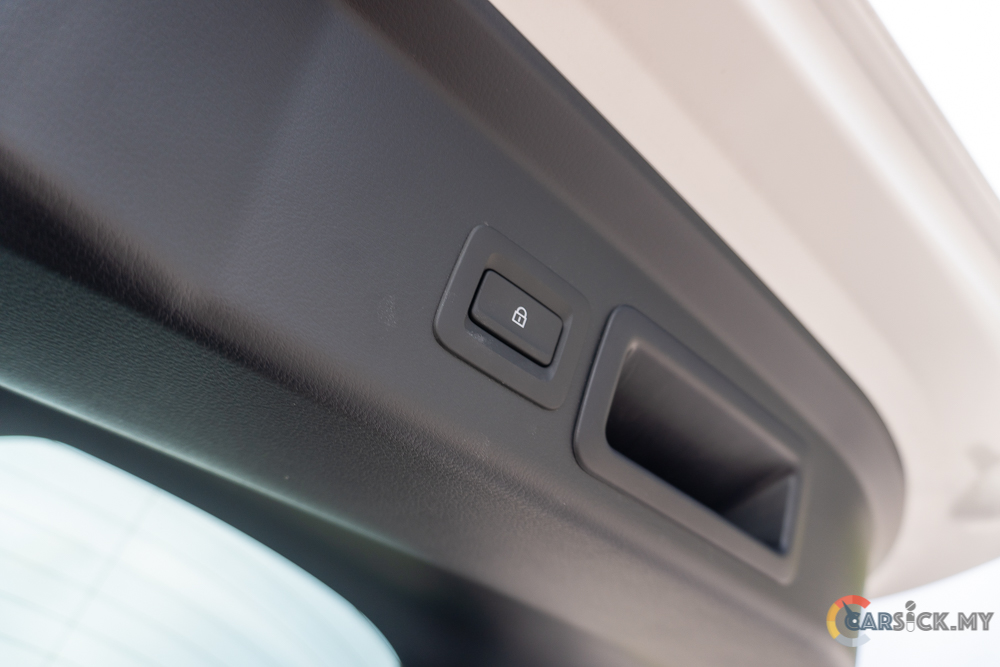
Inside the vehicle, it’s challenging to discern that this is the lower-spec CX-30. The infotainment screen and instrument cluster mirror the 8.8-inch and 7-inch units found in other CX-30 variants, upholding the premium interior feel. I was pleasantly surprised to discover that the base model CX-30 even includes a heads-up display, a definite advantage. 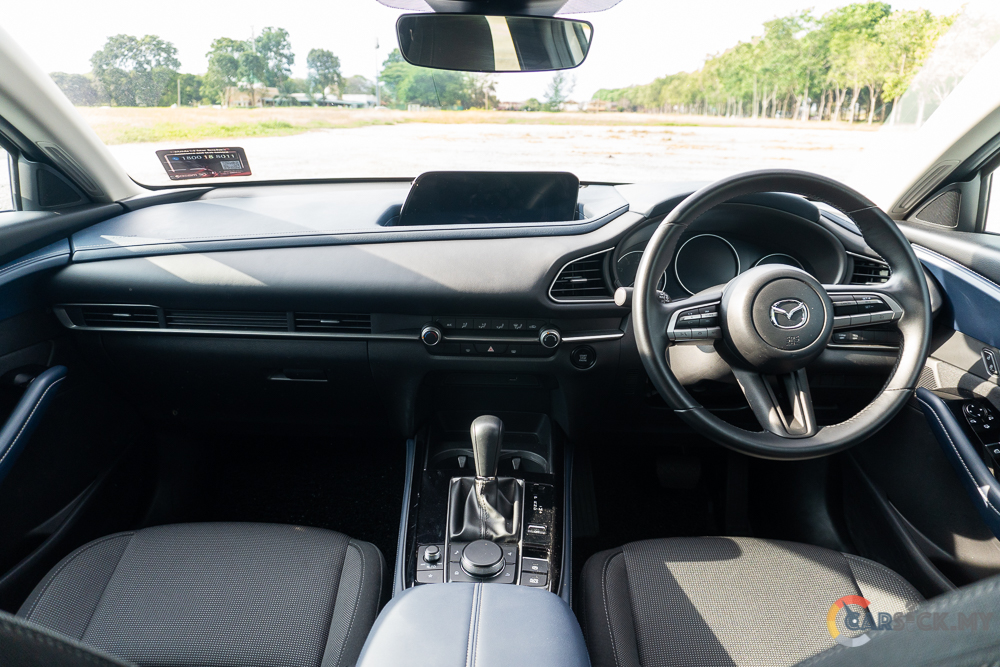
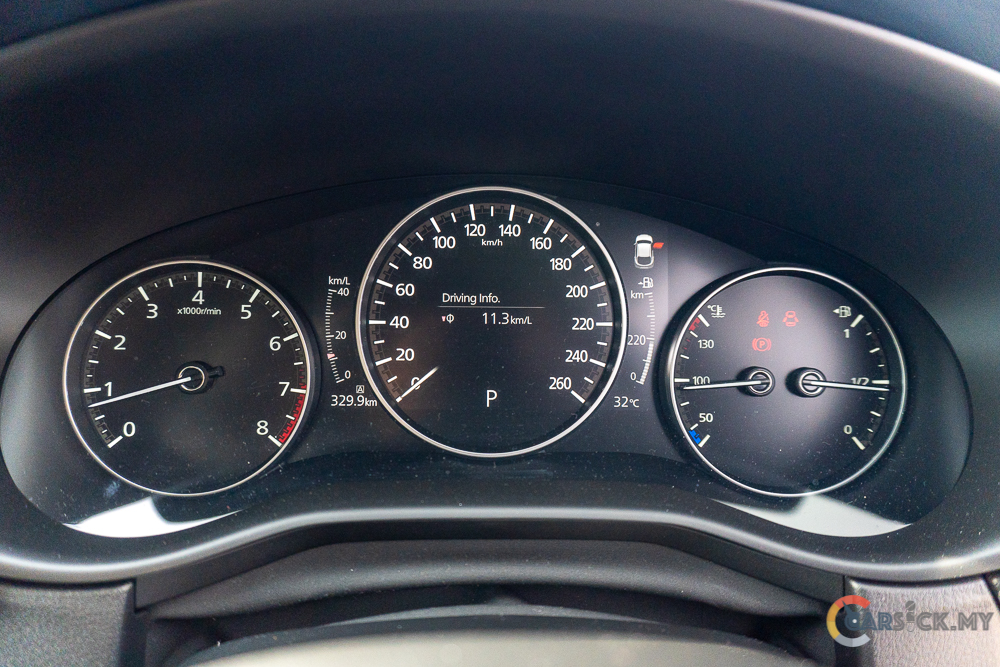
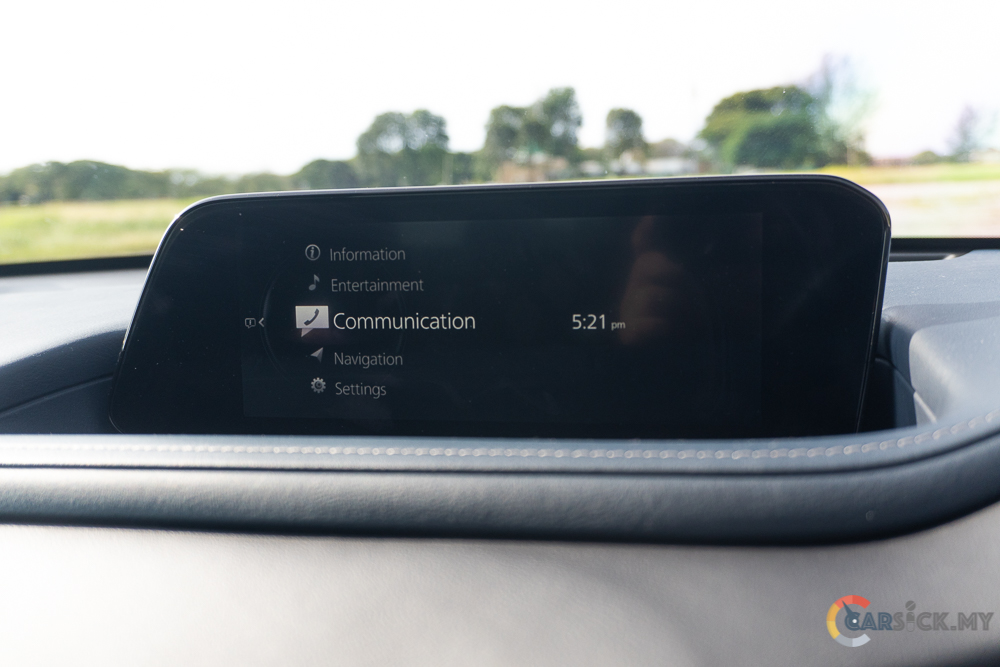
The most noticeable interior difference is the color scheme. While higher-spec CX-30s boast a dark brown interior, the base model features a very dark blue interior that appears almost black in low light. This unique look sets it apart from other Mazda models. The interior remains generously adorned with soft-touch materials, maintaining a luxurious ambiance even at this price point, reinforcing Mazda’s commitment to quality consistency. 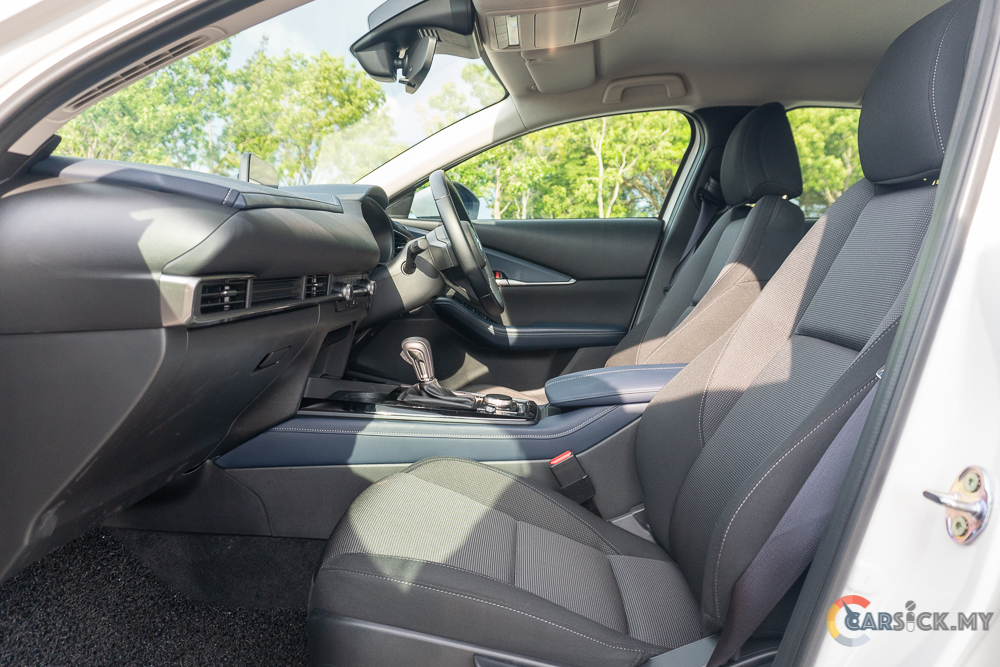
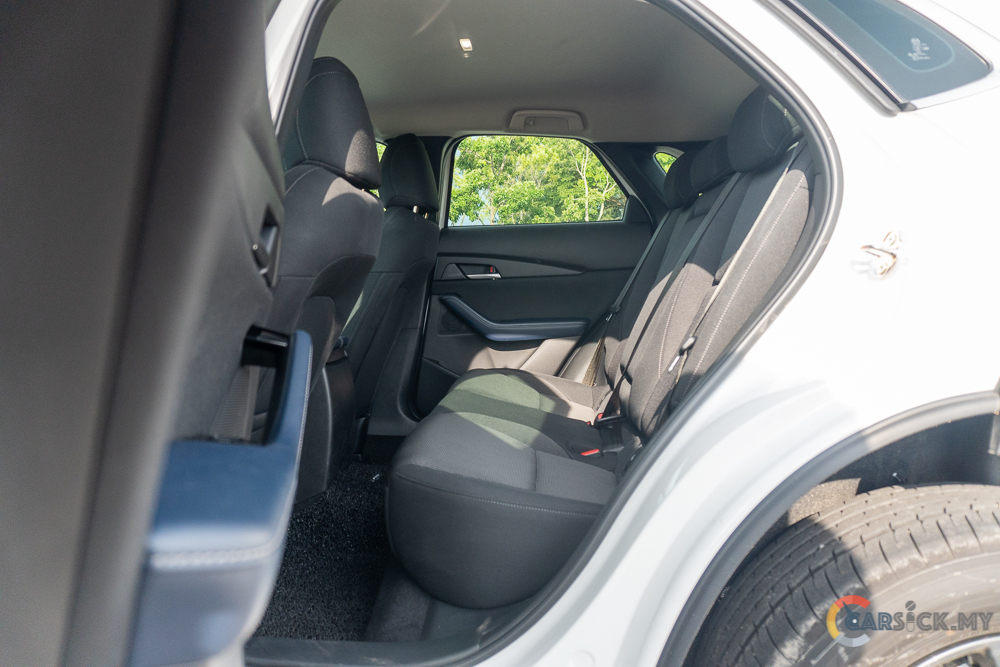
To achieve cost savings, Mazda opted for manual climate control in the base CX-30, replacing the dual-zone digital climate control found in higher trims. While this might not be a deal-breaker, the rear center AC vents have also been omitted. Fortunately, the front AC vents can adequately cool the relatively compact cabin.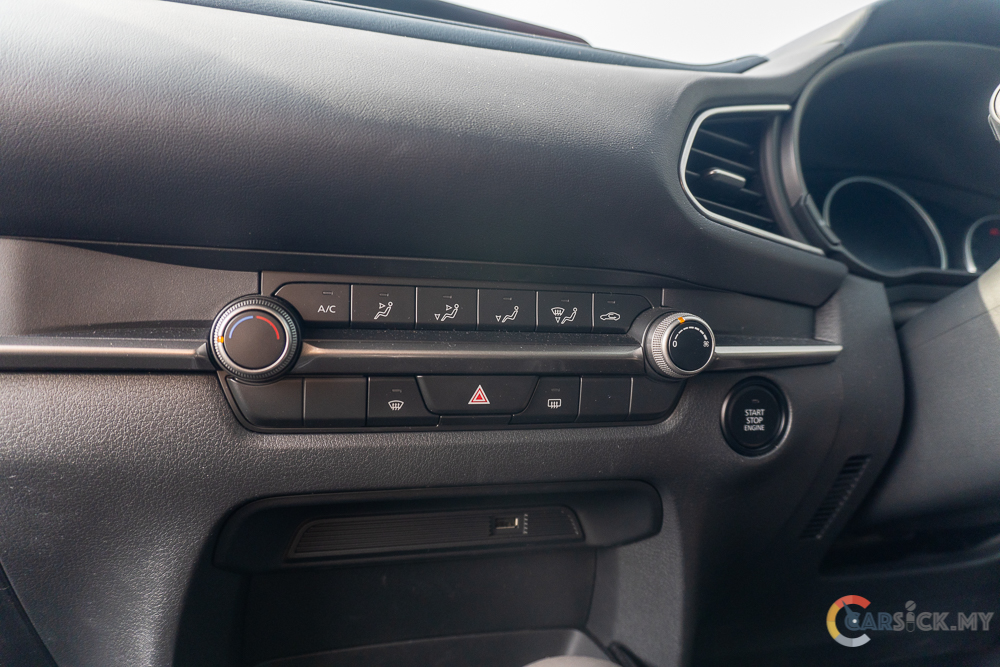
Furthermore, all the seats in the entry-level CX-30 are cloth-wrapped rather than leather, though they remain comfortable and offer excellent grip. The driver’s seat loses electric adjustment but maintains an ergonomic design for comfort. The rear seats and cargo space remain consistent with the full-spec CX-30. 


Under the hood, the base CX-30 utilizes the same 2.0L naturally aspirated Skyactiv engine as the rest of the CX-30 lineup. This engine pairs seamlessly with the familiar 6-speed automatic transmission, producing 162 hp at 6,000rpm and 213 Nm at 4,000rpm, with power sent to the front wheels. 
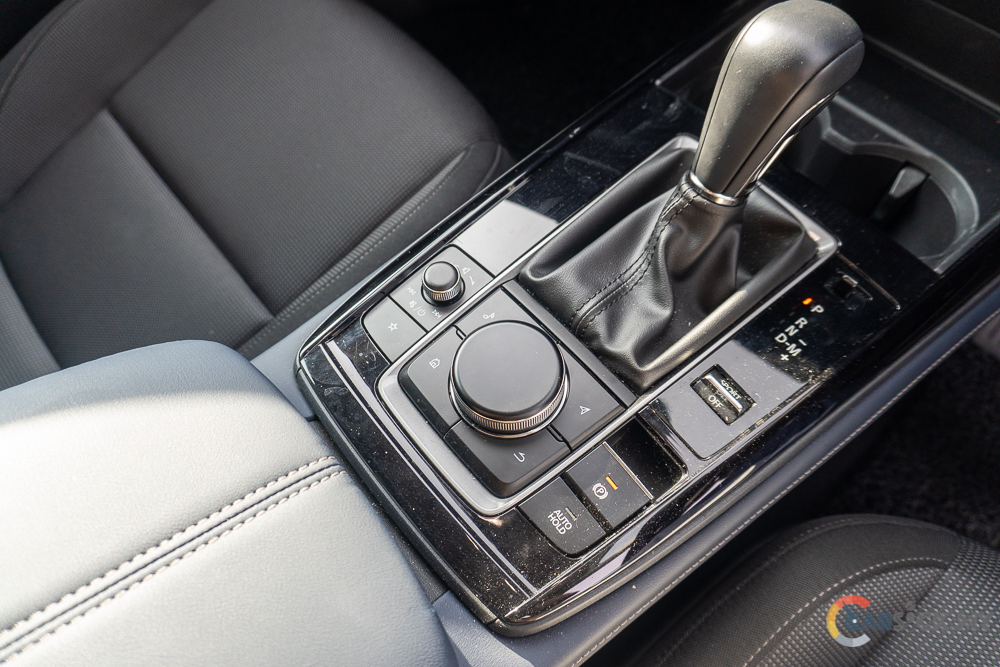
The driving experience exhibits only subtle differences due to the smaller rims and thicker tires on the base model CX-30. These tires provide an added layer of comfort when traversing uneven terrain but contribute to slightly increased body roll when cornering.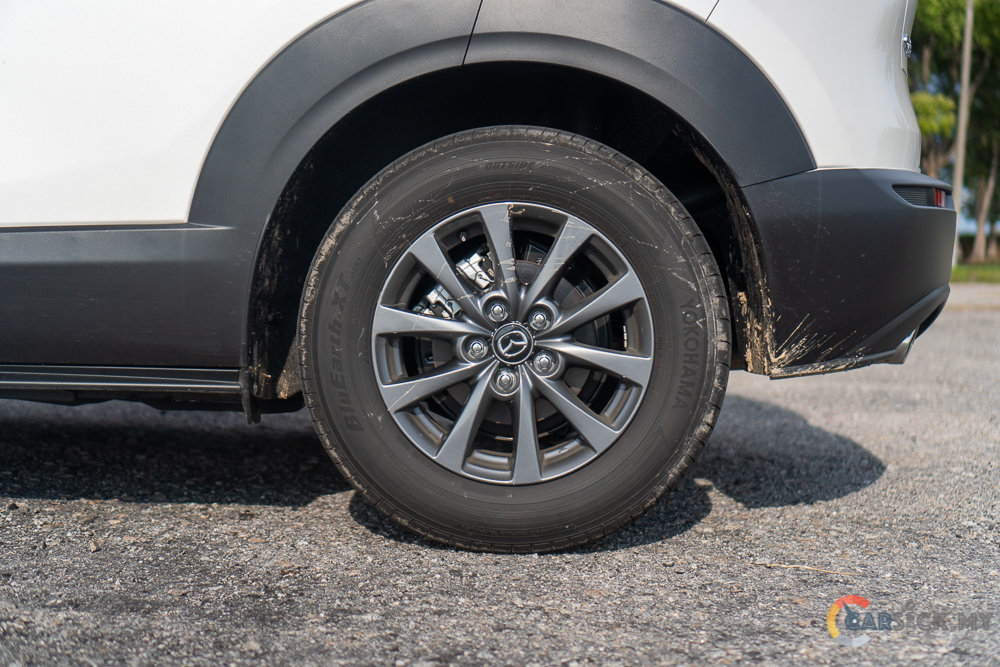
In terms of driver assistance systems, the entry-level CX-30 does not come equipped with advanced driver aids. While some may consider this a drawback, I found it reassuring to drive without the distractions of constant warnings and alerts. The CX-30 still boasts a robust set of safety features, including seven airbags, Anti-lock Braking System (ABS), Electronic Brake-force Distribution (EBD), Brake Assist (BA), Dynamic Stability Control (DSC), Traction Control System (TCS), Emergency Stop Signal (ESS), and Hill Launch Assist (HLA). 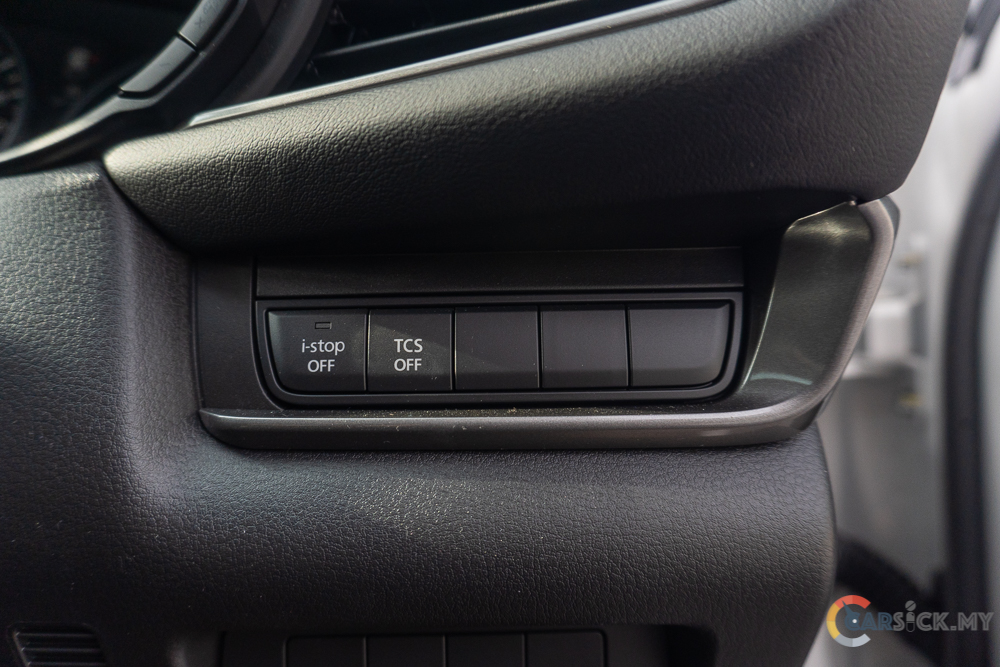
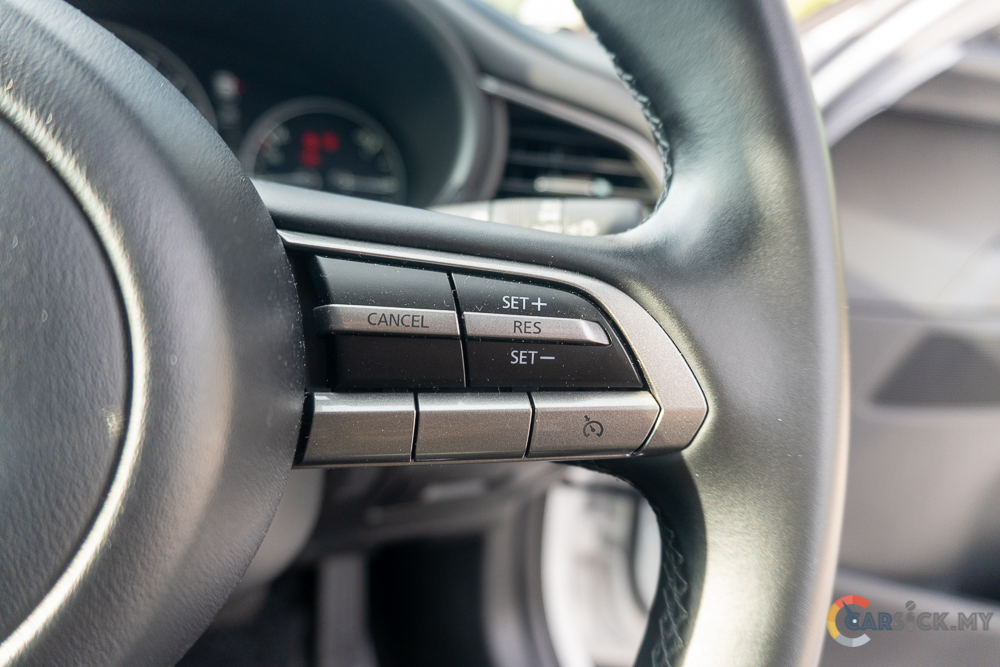
With a price tag of RM 131,000, the CX-30 defies the expectations of an entry-level vehicle. Despite the competitive market, the base model CX-30 remains an attractive option. It maintains a respectable level of premium quality, never giving the impression of a budget vehicle. For me, this is a CX-30 worth considering, provided Mazda includes front and rear parking sensors in the package.
Full photo album here.
